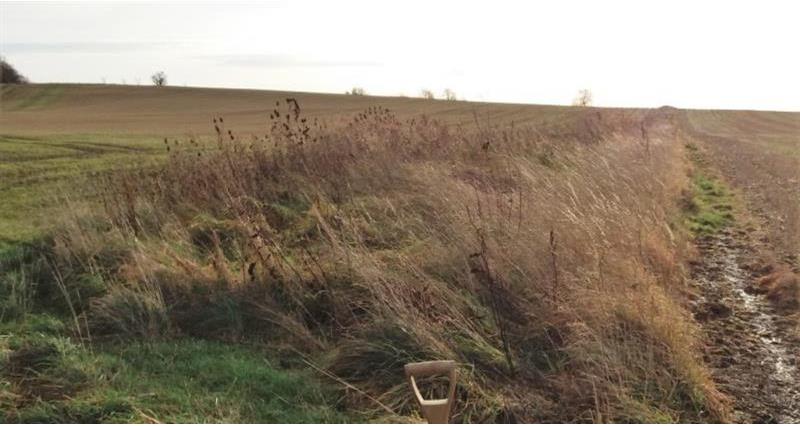What
Beetle banks are grass mounds, about two metres wide, which run the length of large arable fields, cutting right across the middle. The field headland can remain intact so the whole field is still farmed as one unit.
Why
Beetle banks can be strategically placed along slopes of fields prone to surface run-off to improve infiltration and reduce the risk of soil erosion.
Beetle banks improve natural pest control in the middle of fields larger than 16 ha. They provide essential over-wintering habitat for many beneficial insects and spiders, which will move into the crop in the spring and feed on crop pests. These species may travel up to 250 metres from grass field margins during spring, so they do not reach the centre of large fields. Beetle banks provide an over-wintering habitat that enables such predatory insects to cover a whole field.
Beetle banks also provide habitat for ground-nesting birds and small mammals. They are preferred by species that nest in open farmland away from field boundaries, such as corn buntings and skylarks, and mammals such as harvest mice. Grey partridges may also select these in preference to hedge banks to avoid predators.
How
Deciding on the right location
This will depend on the function of the beetle bank:
- To intercept surface run-off, the beetle bank, or banks, should run along the contours of the slope so that the raised bank holds up water running down the slope and increase the rate of infiltration into the soil.
- To improve the degree of natural pest control in large arable fields, beetle banks should be located through the middle of fields larger than 20 ha, between tramlines so that the crop can still be sprayed on either side with minimal disruption to spraying operations.
Creating a beetle bank
- September is the best month to establish the grass sward that forms a beetle bank.
- You will need to plough furrows that point towards each other from either side during cultivation of the field to create a raised bank of about 0.4 metres along the plough line. The headland at each end of the beetle bank can remain cropped.
- The grass mix should include up to 30% of tussock-forming species such as cocksfoot or timothy grass. The rest of the mix can consist of fescues and bents. All species should be of native origin.
- Broadcast the seed at a rate of 70 kg per hectare immediately after the cultivation to get good establishment.
Management
- Three cuts may be necessary in the first summer (when the sward reaches 10 cm in height) to encourage the grasses to tiller and to help control invasive annual weeds.
- Once established, you should only cut the grass strips when there is a need to get the dead tussocks to regenerate (this is likely to be no more than once every three years).
- Avoid spray drift affecting the beetle bank - beetle banks are particularly vulnerable to the effects of pesticide drift because they are narrow strips within the middle of a cropped field.
- On light soils with a low weed burden, conservation headland management on either side of a beetle bank will enhance its value for insects and birds whenever the adjacent crop is a cereal (see Voluntary Measure 13).
- Wider features can be created by adding grass buffer strips to one or both sides, or more habitat diversity created by establishing a wild bird cover crop on one side and a nectar flower mixture on the other, so that insect-rich habitat, seed-rich habitat and nesting habitat for birds such as grey partridge are all found in close proximity.
